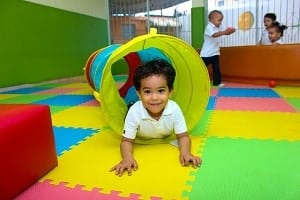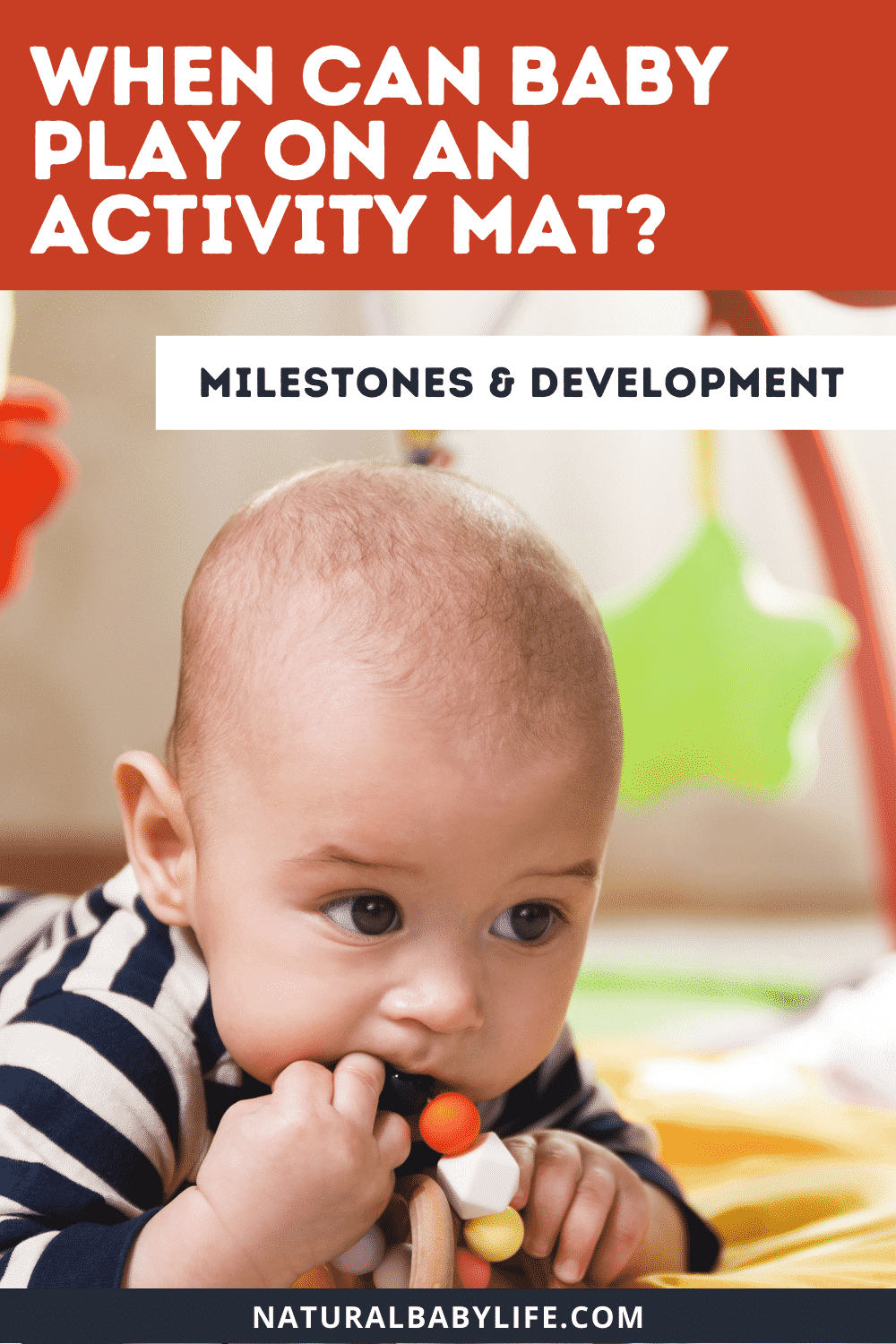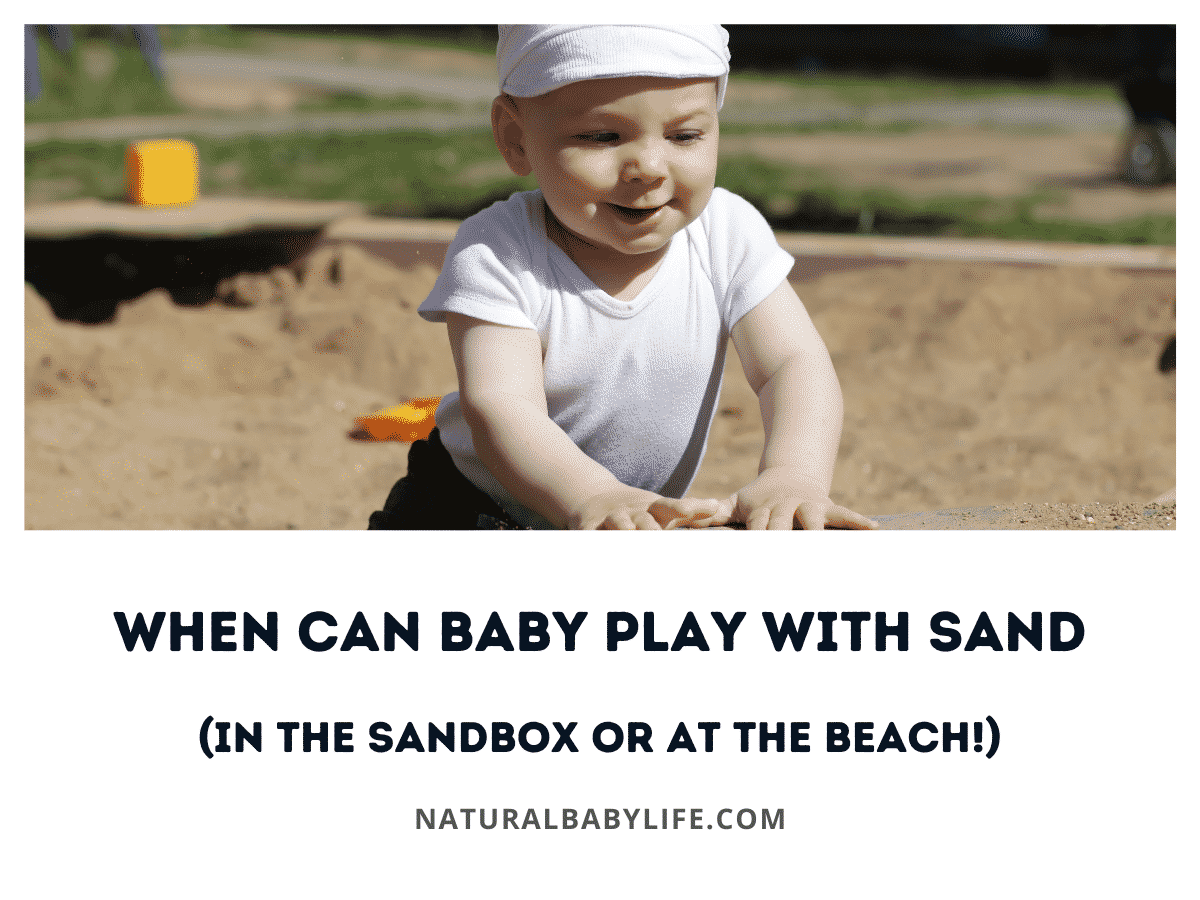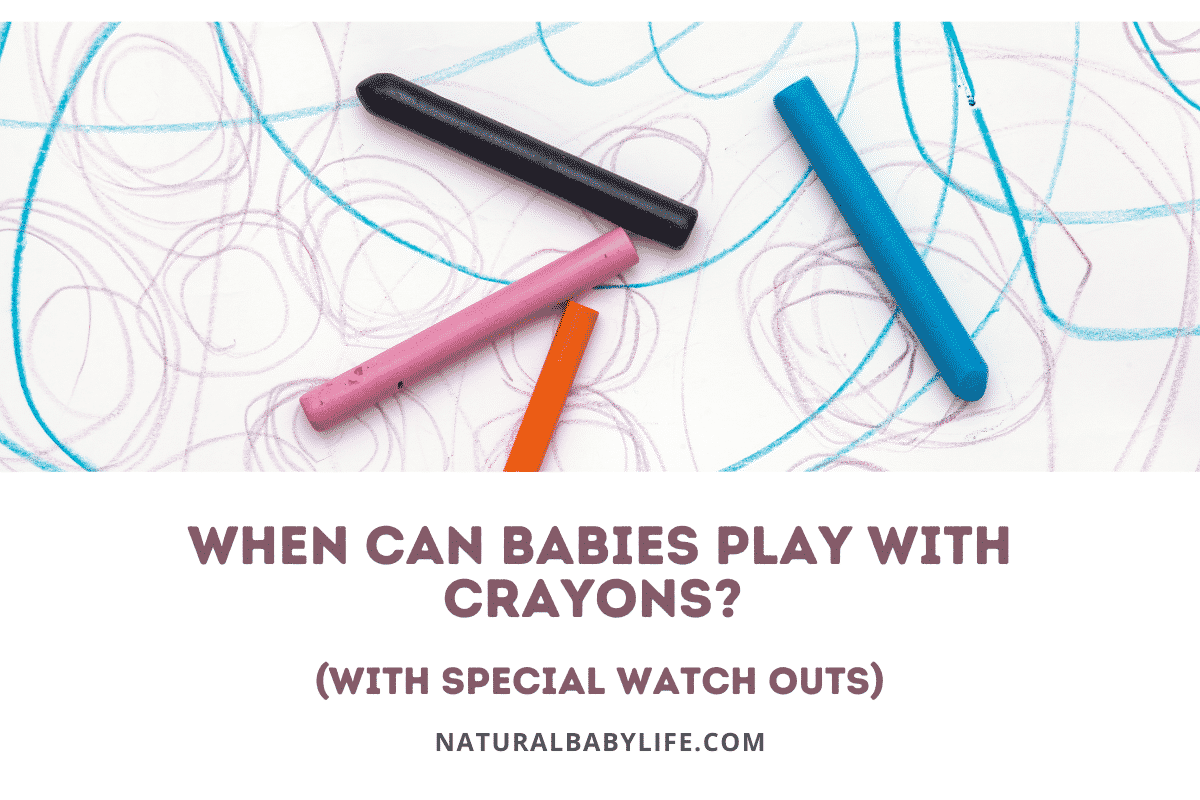These days, there are many chemicals and synthetic materials used in the production of baby toys and other products which makes it tough to figure out exactly which products are safe for your baby to play with. As our newest baby grows into a toddler, we started taking a hard look at EVA foam mats to see whether or not they are safe for use.
After researching the issue, EVA foam (ethylene vinyl acetate) is generally considered to be a safe material for use in baby mats and toys. While there is some potential for formamide exposure, these risks are negligible and likely aren’t a concern.
It’s always difficult to make a decision as a parent about which products are safe for our children to use. In some cases, a ‘better safe than sorry’ approach is warranted and in other cases, there just doesn’t seem to be enough risk to cause concern. Let’s check out more details on the subject.
Table of Contents
What is EVA foam and how is it made?
EVA foam is a rubbery, soft material that is used in a huge number of different products on the market today. Obviously, we are talking mostly about baby play mats and toys today, but it’s also found in things like running shoes, shin guards, packing foam, splints, carpet underlay, and more. Basically, anytime there is a need for an impact-absorbing material or soft grip, you’re probably going to run into a variant of EVA foam.
For babies and toddlers, this material is great because it is tough enough to withstand hard play, spills, and other issues that tend to come up when kids are involved. It’s also soft and shock-absorbent enough to prevent them from getting hurt when they are tumbling, jumping, and otherwise acting crazy while they play!
The foam is made by taking ethylene vinyl acetate and either injection or compression molding it with hot air into a durable, flexible material.
Is EVA foam safe for babies?
After researching the issue and looking at it from every angle I can, I think that EVA foam is safe for use in baby products.
Yes, there are better alternatives for SURE and it’s always a good idea to avoid any sort of plastics or other materials that use chemicals as part of their manufacturing process because you never know what sort of contaminants might be lurking underneath the surface. However, the bulk of the information I’ve found shows that the potential risks associated with EVA foam seem overblown to me and both doctors and government regulatory agencies have tightened up their standards and tested items on the market for chemical exposure. As you’ll see, the issues don’t seem to hold up to scrutiny.
Is EVA foam toxic?
Ethylene vinyl acetate is widely accepted as a safe alternative to other types of materials because it doesn’t require the use of plasticizers to make it and it’s very stable once manufactured. It’s also BPA free. If you aren’t sure what a plasticizer is, phthalates are an example you might be familiar with and I think we have all heard how dangerous they can be for general health.
Unlike some plastics that are prone to off-gassing or leaching chemicals out over time, especially when heated, stable compounds like EVA are much less likely to release anything when used.
What about formamide in EVA foam?
A while back, EVA foam did come under fire when it was discovered that there could be a chemical called formamide off-gassing from the material when it was used which is what caused the controversy with childrens’ products. This would expose children to the chemical either through inhalation or directly through the skin. Formamide has been found to be a carcinogen in rat studies and it’s generally considered to be bad news for humans as well.
These alarm bells led the regulatory boards of many countries to check into the situation more closely to see if there was any danger to consumers.
This is where things get a little mixed.
While the Canadian government concluded that formamide was definitely dangerous, it also found that levels of exposure in the products tested weren’t high enough to be concerning. Meanwhile, the Australian Competition and Consumer Commission (ACCC) tested over a dozen play mats for formamide contamination and found no evidence that they were dangerous. In fact, they reported that:
“…a child would need to mouth for 20 minutes, or ingest, at least 4.17 square metres of typical foam play mat every day over their entire life to approach a level of exposure to formamide which might raise health concerns.”
I’m a natural skeptic, but those are pretty strong findings from a national review board and Australia is usually pretty quick to shut down something it deems dangerous.
Avoiding formamide in your EVA foam baby products
Unfortunately, at least here in the USA, the government doesn’t regulate formamide so there is not a clear standard that manufacturers have to comply with on their products.
Fortunately, many toy makers that take safety seriously for their customers have opted to comply with the EN-71 European toy safety standards to ensure that their products are as safe and transparent as possible. Recently, a new toy safety directive was added that sets a limit on formamide emission in toys at 20 micrograms per square meter after no more than 28 days from manufacture. Even after years of banning the use of formamide in toy puzzle mats for years, France agreed to this regulation and has joined the rest of the EU on this issue.
Alternatives to EVA foam mats
Of course, the best way to avoid formamide completely is to avoid buying products that could be contaminated with them at all. This would mean avoiding EVA foam altogether and, instead, purchasing products made from natural rubber, organic cotton, or some other material. There are definitely options available, but they are going to be pricier. Depending on the material, they also might not be able to handle the rough play of a toddler!
Here are two solid options:
- Natural rubber – Using natural rubber means that you won’t have to worry about chemically-processed plastics in your baby’s play mat. They are extremely durable, naturally hygienic, and easy to clean. We love the Tribe West brand when it comes to natural rubber baby mats because they put a huge emphasis on safety and quality while also offering designs that can fit well into the aesthetic of any room in the house – not just the baby’s room! Check out their eco-friendly, natural rubber playmat here (available on Amazon Prime).
- Organic cotton – Using products made from organic cotton is 100% safe for your little one. Organic cotton hasn’t been treated with any harsh chemicals and will be soft and warm! It’s very difficult to find playmats that are made completely out of cotton, but there are many options that have a cotton cover or upper material along with eco-friendly foam underneath for extra padding. One great option is the Baby Mushroom Baby Bello organic play mat because it has a machine-washable cover, rolls up for storage or transport, and works on any surface in your house (including hardwoods!). You can check out the latest reviews and purchase on Amazon here.
Finding safe baby products made from EVA foam
If you are shopping for products made from EVA foam, be sure to check the item details and look to be sure that the manufacturer lists that their product is free of things like formamide, formaldehyde, lead, BPA, phthalates, latex, and fire retardants. Although calling a mat ‘formamide free’ may not technically be true because the tests do allow for 20 micrograms per square meter, it does mean that it has been tested and poses very little, if any, risk of formamide exposure.
SoftTiles is a brand that has been around since 1994 and uses EVA foam that has been tested to be free of formamides, BPA, and pthalates. They are super thick, have modern designs, and have a nicely sloped edge that helps prevent babies tripping when moving off and on the mat! They are completely waterproof, easy to clean, can be used on hardwood floors, and will last a long time! You can check out this brand here (read more reviews on Amazon) with my favorite grey/white design that will work great in many different rooms!
The bottom line on EVA foam
Overall, I would avoid buying products that contain EVA foam if I had the means to do so. Other options just start getting extremely pricey and I personally can’t always afford to buy my first pick. With that being said, the evidence I’ve seen while researching this issue has led me to believe that the majority of the playmats on the market using EVA foam are safe for my babies, provided that they come from a reputable manufacturer that tests their products and conforms to tough standards. In these cases, the risks are incredibly minute.
As with all things, adopting a ‘better safe than sorry’ mindset will likely do well for you, but in this particular case I’m not too worried.










